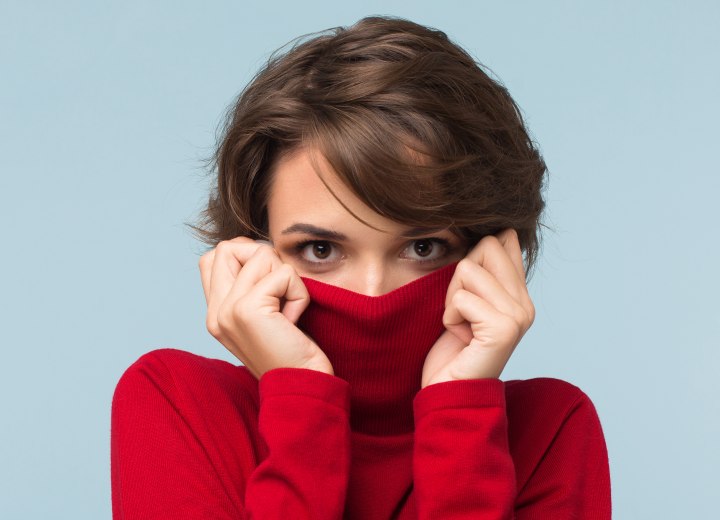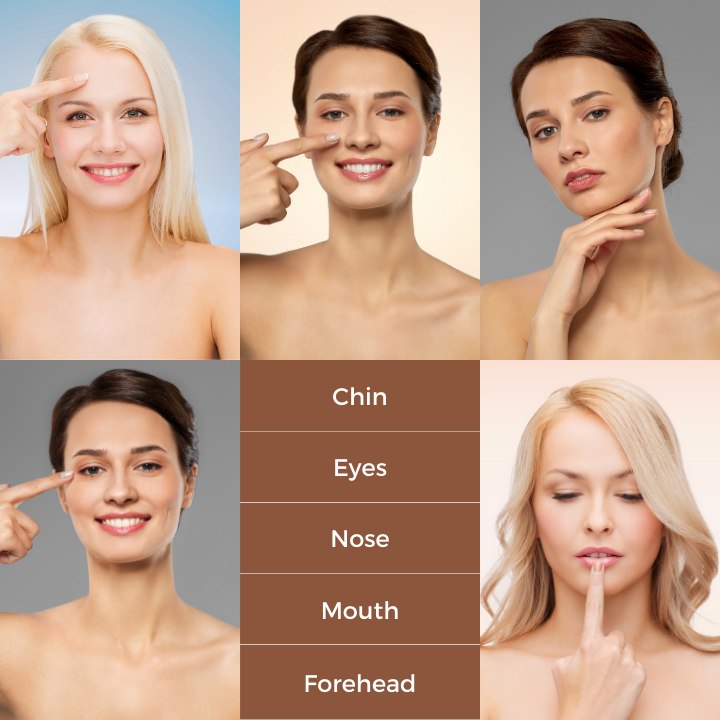Dealing with Specific Facial Features

You know the general shape of your face, but you worry that the hairstyle you love on your favorite actress won't look the same on you. The truth is, it probably won't look exactly the same, as we are all different.
Even though we can categorize facial shapes and give general suggestions on style options, each individual has his or her own personal quirks. We all have our "best" features, and many of us have a "problem area" that we need to address when choosing a hairstyle. Here are some common issues and suggestions for minimizing them:
Prominent Nose: When dealing with a prominent nose, you can minimize the severity of the profile by choosing a hairstyle that includes bangs and that pulls back from the face on the sides of the head. Avoid curling in favor of curving, and keep the lines simple. Shorter, blunt-cut styles tend to work best.
Prominent Chin: This is similar to the prominent nose in that it adds a sharp angle to the profile of the head. The solution is also similar. Again you want to use bangs if possible and keep the lines simpler. With a prominent chin, longer is better. Try to keep the style at least neck or shoulder-length and consider layered ends and softer curves instead of curls.
Flat Features: Sometimes the problem isn't a feature that protrudes forward, but rather that the profile appears too flat. Choose a style that pulls the hair back from the face and add volume along the top and back to add depth to the profile. A short, layered or graduated cut styled with added volume can have the desired effect.

High or Low Forehead: When dealing with a high forehead, it is generally good to consider having bangs styled forward onto the face in the style of your choice to minimize the amount of forehead visible. Conversely, individuals with a low forehead will find that styling their hair away from the face - either backward or to the sides - produces a flattering look.
Close-Set or Wide-Set Eyes: An individual with close-set eyes can feel that they have eyes that are too small. By styling the hair forward on the sides of the face, one can decrease this appearance and make the face look more normally proportioned.
However, when dealing with wide-set eyes, avoid volume on the sides of the hairstyle and keep the hair away from the face. Keeping the style off the face increases the amount of skin visible on the outer sides of the eyes, making the balance seem in proportion. Adding volume on the sides would only make the eyes appear wider.
Small or Large Mouth: When someone has a small mouth and wants to maximize its appearance, he or she should consider a shorter, blunt cut (such as an angled bob) to draw the line of the face inward and make the jaw seem less wide and more balanced with the mouth. A wide mouth, on the other hand, is flattered by longer sweeping styles that avoid crowding the face, but still act as a "frame" for the face as a whole.
Most importantly, when dealing with what you consider to be a "problem feature," remember to emphasize your good features. As long as you bring attention to the things you feel are most flattering about you, you can rest assured that fewer people will notice those features you find less appealing.
©Hairfinder.com
See also: Hair FAQs